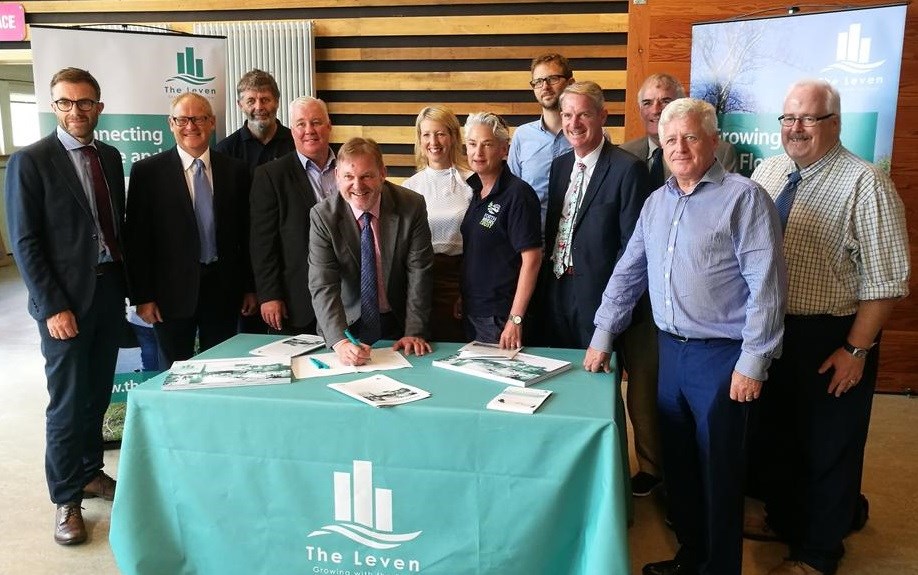
Fife College has backed a ‘Sustainable Growth Agreement’ with SEPA and other partners, focused on six strategic outcomes for a “living, breathing example of inclusive growth.”
The agreement was signed by the College and Fife Council, Sustrans, Scottish Natural Heritage, Scottish Water, Scottish Enterprise, Forth Rivers Trust, Diageo, Central Scotland Green Network Trust and Keep Scotland Beautiful at a launch event held in the former Tullis Russell Environment Education Centre, Glenrothes last Friday.
The ambitious first in Scotland partnership, signed at a launch event, the vision seeks to deliver a series of objectives by 2030:
- The area will support a network of paths and sustainable travel routes that will connect people, communities and business to each other and the environment.
- The area will become a ‘go to’ destination and sustainable tourism will become one of the area’s key economic attractions, whilst not increasing carbon emissions or negatively impacting on biodiversity of the area.
- The area will be a dynamic hub for social enterprise, youth and education.
- The area will be able to attract and support business and industry and become a hub between the cities of Dundee and Edinburgh.
- Registered vacant and derelict land, the equivalent of around 12 football pitches, in the Leven catchment, will be made productive for the benefit of communities in the region and in support of inclusive economic regeneration.
- The area will have a natural environment that will support a diverse ecology and celebrate its social history.
Sustainable Growth Agreements are voluntary, non-legally binding, formal agreements through which an organisation (or organisations) and the Scottish Environment Protection Agency (SEPA) can explore new and innovative ways to improve environmental performance and focus on practical actions that deliver environmental, social and economic success.
This Sustainable Growth Agreement is the first in Scotland involving multiple organisations working in partnership to achieve shared outcomes across a river catchment. It takes an innovative partnership approach to realise ambitions that go beyond the scope of the individual organisations involved.
The vision, shared by partners, is that by 2030, the Leven catchment will be a living, breathing example of inclusive growth, achieving environmental excellence in ways that create social and economic opportunities
Historically the catchment was the engine of mid-Fife sustaining several hundred mills and factories and was home to miners and workers in the manufacturing industries. Since then serious environmental challenges have arisen in the catchment with multiple pressures and environmental impacts including barriers to fish migration, water quality issues and physical modifications to the rivers.
Hugh Hall, Fife College Principal, said: “Fife College is committed to working with its partners to deliver the ambitions set out in the Leven Sustainable Growth Agreement. The project has already enabled our talented students to make use of their creative skills in designing a brand image and logo which will be used on everything associated with the Leven Catchment programme - from the website and publicity materials to t-shirts and recycled pencils.
“We aim to give many more Fife College students opportunities to get excited and educated about sustainability and to contribute to achieving successful outcomes for the River Leven catchment.”
SEPA Chief Executive, Terry A’Hearn, said:
“I’m excited to be signing this River Leven Partnership today. I’ve worked as an environmental professional for thirty years in four different nations. I’ve heard lots of speeches and read lots of strategies about sustainability. Too much of this has been about generalities; not enough has been about action.
“This River Leven Partnership is different. Eleven organisations are signing up today to take actions, not to simply speak fine words. All of us are determined to create environmental improvements in ways that drive economic and social success for the people living in this part of Scotland.”



